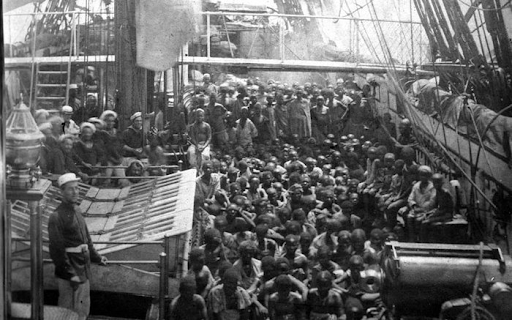
The transatlantic slave trade, spanning from the 16th to the late 19th centuries, is considered history’s greatest long-range forced movement of people. Which estimated twelve to fifteen million African people, men, women, and children, were subjugated and carried to the Americas, and sold mostly by European and Euro-American slaveowners, handled as property for labor and skills.
This brutal slave trade started with a single slave person, leading a cycle of terrible events intentionally directed to cut off them from their home, family, and everything familiar. They are trapped in their hometown in Africa and transferred to the coastline, sold to traders, the brutal transition on a slave ship, and finally, sold and subjugated in the Americas. This journey tested the strength of countless individuals, challenging their energy and will to discover purpose and pleasure in a new and enforced world.
In this immense trade, lasting 366 years, European slaveholders carried approximately 12.5 million Africans alongside Atlantic ships, with about 11 million surviving the dangerous Middle Crossing to begin life again in the Americas.
This brutal trade was This brutal Initiated by the Portuguese and Spanish, specifically after setting up sugar plantations in the Americas. The trade grew due to various issues along the African beach, especially from West and Central Africa and Angola. Subjugated Africans labored primarily on sugar cane plantations, yielding sugar, rum, honey, and other items for export to Europe and North America, forming the economic landscape of the Atlantic world.

The Portuguese, Spanish, British, French, and Dutch were major participants, with British traders solely carrying 3.5 million Africans. As the trade developed, different ways and commodities supported it, from Spain’s permitting agreements to monopoly companies like Britain’s Royal African Company and the Dutch West India Company. These companies not only arranged slave ships but also modified cities like Liverpool, Bristol, Nantes, and Bordeaux economically and politically, developing links beyond continents for trade.
Working within a more comprehensive trade system among West and Central Africa, Western Europe, and North and South America, European traders exchanged metals, cloth, and beads, weapons, and shells for imprisoned Africans. Often, many prisoners died during the brutal across-land journey from the interior to the coast.
Approximately 10 to 19 percent of Africans died due to terrible conditions on these ships. On arrival in the Americas, these people were auctioned or traded to various owners, including plantation owners, business people, farmers, and slave traders, who could transfer them further for sale across the territory. Mostly, European slaveholders searched for subjugated labor for household services, traditional trades, and especially agricultural work, developing cash crops for national and global markets. Revenue from these exports stoked up land increase and the ongoing cycle of buying more enslaved Africans, continuing the trade until its official extinction by European nations and new American states in the 19th century, even though illegal activities continued subsequently.

As requirements rushed beyond untroubled trade, Europeans originated military coalitions with African groups, raising warfare to obtain slaves for trade. Attempts at African occupation were made, but these remained limited due to objections from both African leaders and European rivals. Competition during marine conflicts with the Portuguese granted other European nations like the Dutch, English, and French access to bound Africans, disregarding the Portuguese monopoly. By the 18th century, the British, French, and Portuguese had become the major movers of enslaved Africans, with the majority destined for plantations in Brazil and the Caribbean.
European traders, and later those from Brazil and North America, loaded their ships with goods from Asia to trade for enslaved Africans, fulfilling certain requirements by African traders for European goods like textiles, firearms, and beverages.
The wealth gathered from this trade feeds industries and organizations in modern North America and Europe, while also contributing to the formation of art, ornamental crafts, and architecture that continues to impact aesthetics today.





